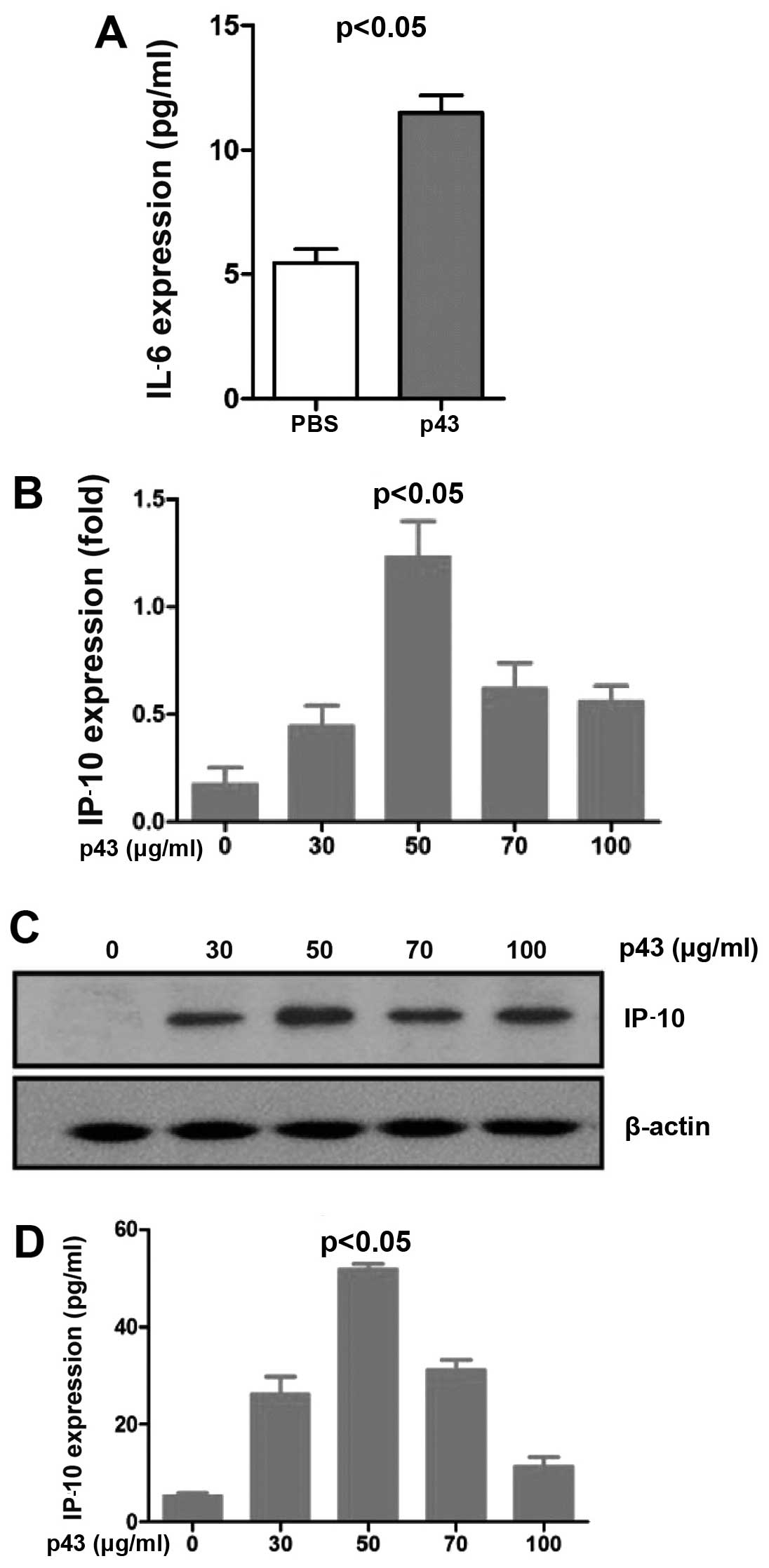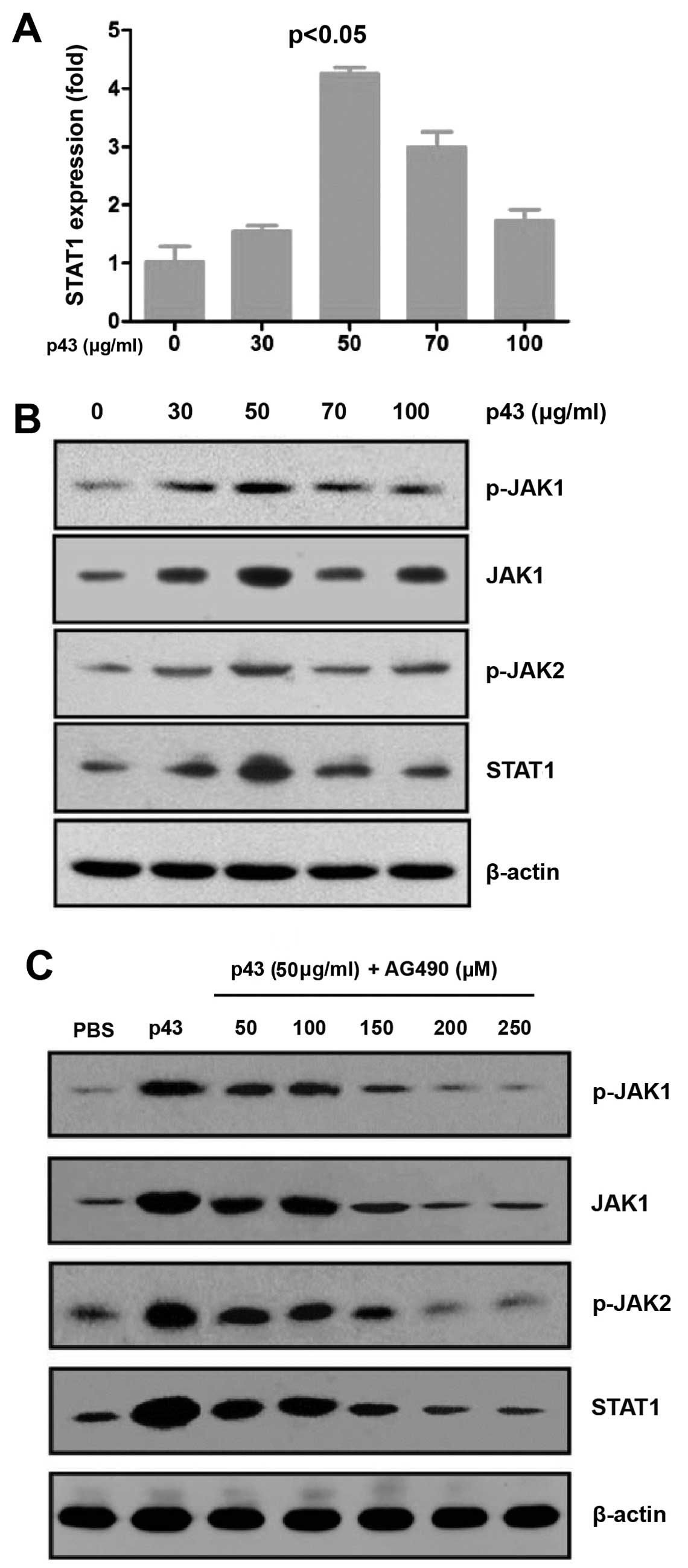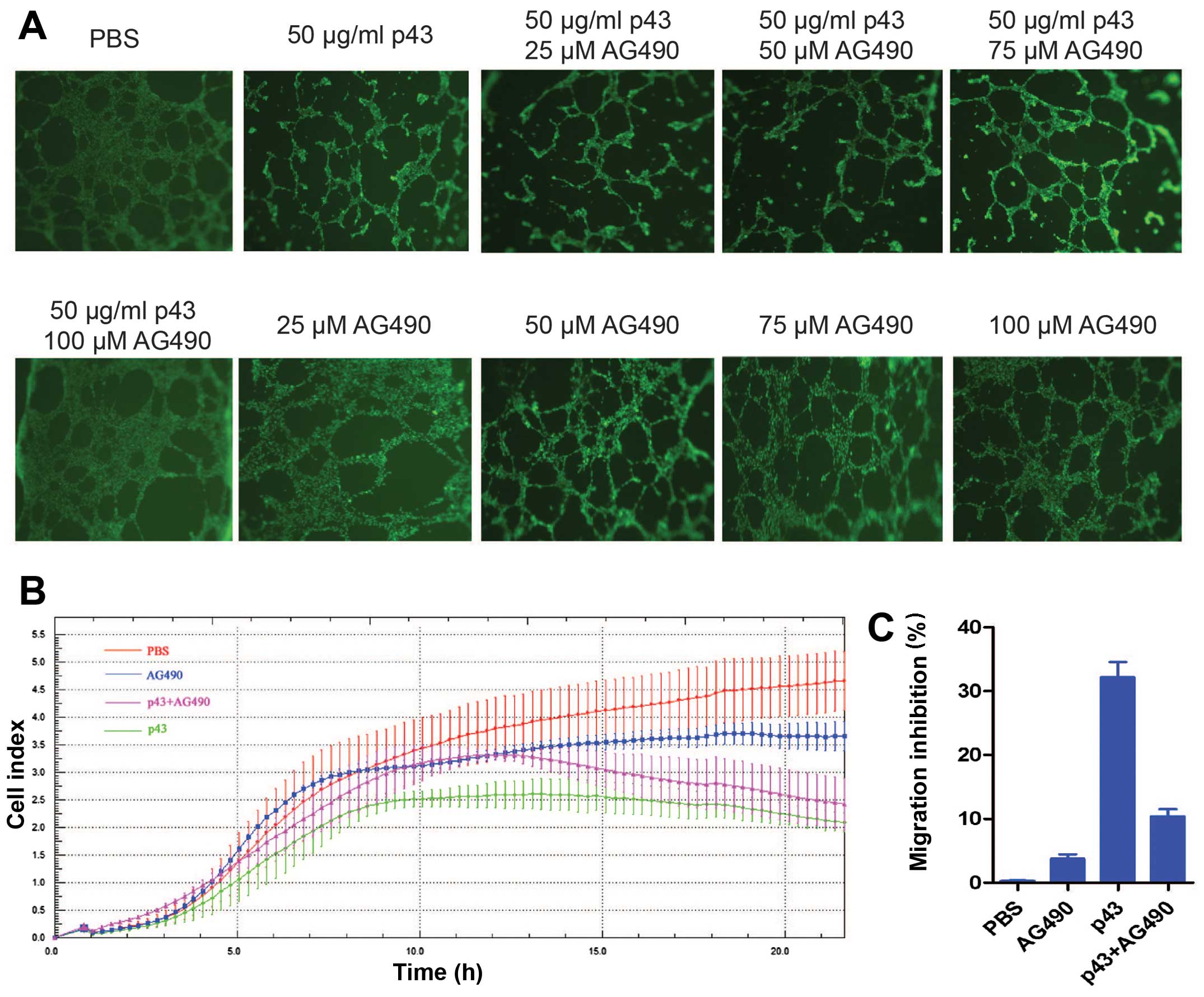|
1
|
Bdolah Y, Sukhatme VP and Karumanchi SA:
Angiogenic imbalance in the pathophysiology of preeclampsia: newer
insights. Semin Nephrol. 24:548–556. 2004. View Article : Google Scholar : PubMed/NCBI
|
|
2
|
Bussolino F, Mantovani A and Persico G:
Molecular mechanisms of blood vessel formation. Trends Biochem Sci.
22:251–256. 1997. View Article : Google Scholar : PubMed/NCBI
|
|
3
|
Hanahan D and Weinberg RA: The hallmarks
of cancer. Cell. 100:57–70. 2000. View Article : Google Scholar : PubMed/NCBI
|
|
4
|
Bouck N, Stellmach V and Hsu SC: How
tumors become angiogenic. Adv Cancer Res. 69:135–174. 1996.
View Article : Google Scholar : PubMed/NCBI
|
|
5
|
Carmeliet P: Mechanisms of angiogenesis
and arteriogenesis. Nat Med. 6:389–395. 2000. View Article : Google Scholar : PubMed/NCBI
|
|
6
|
Goldmann E: The growth of malignant
disease in man and the lower animals, with special reference to the
vascular system. Proc R Soc Med. 1(Surg Sect): 1–13.
1908.PubMed/NCBI
|
|
7
|
Algire GH and Legallais FY: Vascular
reactions of normal and malignant tissues in vivo. IV. The effect
of peripheral hypotension on transplanted tumors. J Natl Cancer
Inst. 12:399–421. 1951.PubMed/NCBI
|
|
8
|
Folkman J: Tumor angiogenesis: therapeutic
implications. N Engl J Med. 285:1182–1186. 1971. View Article : Google Scholar : PubMed/NCBI
|
|
9
|
Quevillon S, Agou F, Robinson JC and
Mirande M: The p43 component of the mammalian multi-synthetase
complex is likely to be the precursor of the endothelial
monocyte-activating polypeptide II cytokine. J Biol Chem.
272:32573–32579. 1997. View Article : Google Scholar
|
|
10
|
Renault L, Kerjan P, Pasqualato S,
Ménétrey J, Robinson JC, Kawaguchi S, Vassylyev DG, Yokoyama S,
Mirande M and Cherfils J: Structure of the EMAPII domain of human
aminoacyl-tRNA synthetase complex reveals evolutionary dimer
mimicry. EMBO J. 20:570–578. 2001. View Article : Google Scholar : PubMed/NCBI
|
|
11
|
Otani A, Slike BM, Dorrell MI, Hood J,
Kinder K, Ewalt KL, Cheresh D, Schimmel P and Friedlander M: A
fragment of human TrpRS as a potent antagonist of ocular
angiogenesis. Proc Natl Acad Sci USA. 99:178–183. 2002. View Article : Google Scholar : PubMed/NCBI
|
|
12
|
Kao J, Fan YG, Haehnel I, Brett J,
Greenberg S, Clauss M, Kayton M, Houck K, Kisiel W, Seljelid R, et
al: A peptide derived from the amino terminus of
endothelial-monocyte-activating polypeptide II modulates
mononuclear and polymorphonuclear leukocyte functions, defines an
apparently novel cellular interaction site, and induces an acute
inflammatory response. J Biol Chem. 269:9774–9782. 1994.PubMed/NCBI
|
|
13
|
Park H, Park SG, Lee JW, Kim T, Kim G, Ko
YG and Kim S: Monocyte cell adhesion induced by a human
aminoacyl-tRNA synthetase-associated factor, p43: identification of
the related adhesion molecules and signal pathways. J Leukoc Biol.
71:223–230. 2002.PubMed/NCBI
|
|
14
|
Norcum MT and Warrington JA: The cytokine
portion of p43 occupies a central position within the eukaryotic
multisynthetase complex. J Biol Chem. 275:17921–17924. 2000.
View Article : Google Scholar : PubMed/NCBI
|
|
15
|
Behrensdorf HA, van de Craen M, Knies UE,
Vandenabeele P and Clauss M: The endothelial monocyte-activating
polypeptide II (EMAP II) is a substrate for caspase-7. FEBS Lett.
466:143–147. 2000. View Article : Google Scholar : PubMed/NCBI
|
|
16
|
Shalak V, Kaminska M, Mitnacht-Kraus R,
Vandenabeele P, Clauss M and Mirande M: The EMAPII cytokine is
released from the mammalian multisynthetase complex after cleavage
of its p43/proEMAPII component. J Biol Chem. 276:23769–23776. 2001.
View Article : Google Scholar : PubMed/NCBI
|
|
17
|
Wakasugi K and Schimmel P: Highly
differentiated motifs responsible for two cytokine activities of a
split human tRNA synthetase. J Biol Chem. 274:23155–23159. 1999.
View Article : Google Scholar : PubMed/NCBI
|
|
18
|
Rosen HR, Moroz C, Reiner A, Stierer M,
Svec J, Reinerova M, Schemper M and Jakesz R: Expression of p43 in
breast cancer tissue, correlation with prognostic parameters.
Cancer Lett. 67:35–45. 1992. View Article : Google Scholar : PubMed/NCBI
|
|
19
|
Park H, Park SG, Kim J, Ko YG and Kim S:
Signaling pathways for TNF production induced by human
aminoacyl-tRNA synthetase-associating factor, p43. Cytokine.
20:148–153. 2002. View Article : Google Scholar
|
|
20
|
Park SG, Kang YS, Ahn YH, Lee SH, Kim KR,
Kim KW, Koh GY, Ko YG and Kim S: Dose-dependent biphasic activity
of tRNA synthetase-associating factor, p43, in angiogenesis. J Biol
Chem. 277:45243–45248. 2002. View Article : Google Scholar : PubMed/NCBI
|
|
21
|
Ko YG, Park H, Kim T, Lee JW, Park SG,
Seol W, Kim JE, Lee WH, Kim SH, Park JE and Kim S: A cofactor of
tRNA synthetase, p43, is secreted to up-regulate proinflammatory
genes. J Biol Chem. 276:23028–23033. 2001. View Article : Google Scholar : PubMed/NCBI
|
|
22
|
Chang SY, Park SG, Kim S and Kang CY:
Interaction of the C-terminal domain of p43 and the alpha subunit
of ATP synthase. Its functional implication in endothelial cell
proliferation. J Biol Chem. 277:8388–8394. 2002. View Article : Google Scholar
|
|
23
|
Luster AD, Unkeless JC and Ravetch JV:
Gamma-interferon transcriptionally regulates an early-response gene
containing homology to platelet proteins. Nature. 315:672–676.
1985. View
Article : Google Scholar : PubMed/NCBI
|
|
24
|
Neville LF, Mathiak G and Bagasra O: The
immunobiology of interferon-gamma inducible protein 10 kD (IP-10):
a novel, pleiotropic member of the C-X-C chemokine superfamily.
Cytokine Growth Factor Rev. 8:207–219. 1997. View Article : Google Scholar
|
|
25
|
Belperio JA, Keane MP, Arenberg DA,
Addison CL, Ehlert JE, Burdick MD and Strieter RM: CXC chemokines
in angiogenesis. J Leukoc Biol. 68:1–8. 2000.PubMed/NCBI
|
|
26
|
Strieter RM, Burdick MD, Gomperts BN,
Belperio JA and Keane MP: CXC chemokines in angiogenesis. Cytokine
Growth Factor Rev. 16:593–609. 2005. View Article : Google Scholar : PubMed/NCBI
|
|
27
|
Rosenkilde MM and Schwartz TW: The
chemokine system - a major regulator of angiogenesis in health and
disease. APMIS. 112:481–495. 2004. View Article : Google Scholar : PubMed/NCBI
|
|
28
|
Xing YH, Liu DT, Tan JJ, Hu LD, Liu G, Fu
XQ and Chen HP: Construction and screening of truncated mutants of
recombinant human anti-angiogenic protein proEMAP/p43. Prog Biochem
Biophys. 41:567–574. 2014.
|
|
29
|
Staton CA, Stribbling SM, Tazzyman S,
Hughes R, Brown NJ and Lewis CE: Current methods for assaying
angiogenesis in vitro and in vivo. Int J Exp Pathol. 85:233–248.
2004. View Article : Google Scholar : PubMed/NCBI
|
|
30
|
Park SG, Jung KH, Lee JS, Jo YJ, Motegi H,
Kim S and Shiba K: Precursor of pro-apoptotic cytokine modulates
aminoacylation activity of tRNA synthetase. J Biol Chem.
274:16673–16676. 1999. View Article : Google Scholar : PubMed/NCBI
|
|
31
|
Lee YS, Han JM, Kang T, Park YI, Kim HM
and Kim S: Antitumor activity of the novel human cytokine AIMP1 in
an in vivo tumor model. Mol Cells. 21:213–217. 2006.PubMed/NCBI
|
|
32
|
Wilks AF and Oates AC: The JAK/STAT
pathway. Cancer Surv. 27:139–163. 1996.PubMed/NCBI
|
|
33
|
Yoshikawa H, Matsubara K, Qian GS, Jackson
P, Groopman JD, Manning JE, Harris CC and Herman JG: SOCS-1, a
negative regulator of the JAK/STAT pathway, is silenced by
methylation in human hepatocellular carcinoma and shows
growth-suppression activity. Nat Genet. 28:29–35. 2001. View Article : Google Scholar : PubMed/NCBI
|
|
34
|
Lin TS, Mahajan S and Frank DA: STAT
signaling in the pathogenesis and treatment of leukemias. Oncogene.
19:2496–2504. 2000. View Article : Google Scholar : PubMed/NCBI
|
|
35
|
Yu CL and Burakoff SJ: Involvement of
proteasomes in regulating Jak-STAT pathways upon interleukin-2
stimulation. J Biol Chem. 272:14017–14020. 1997. View Article : Google Scholar : PubMed/NCBI
|
|
36
|
Guschin D, Rogers N, Briscoe J, Witthuhn
B, Watling D, Horn F, Pellegrini S, Yasukawa K, Heinrich P, Stark
GR, et al: A major role for the protein tyrosine kinase JAK1 in the
JAK/STAT signal transduction pathway in response to interleukin-6.
EMBO J. 14:1421–1429. 1995.PubMed/NCBI
|













